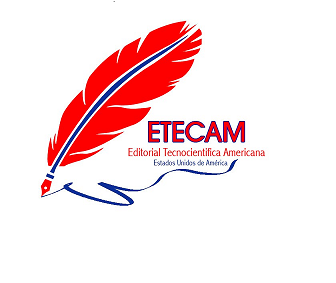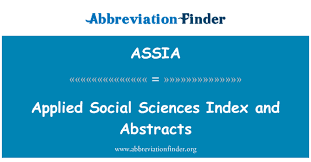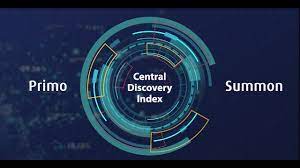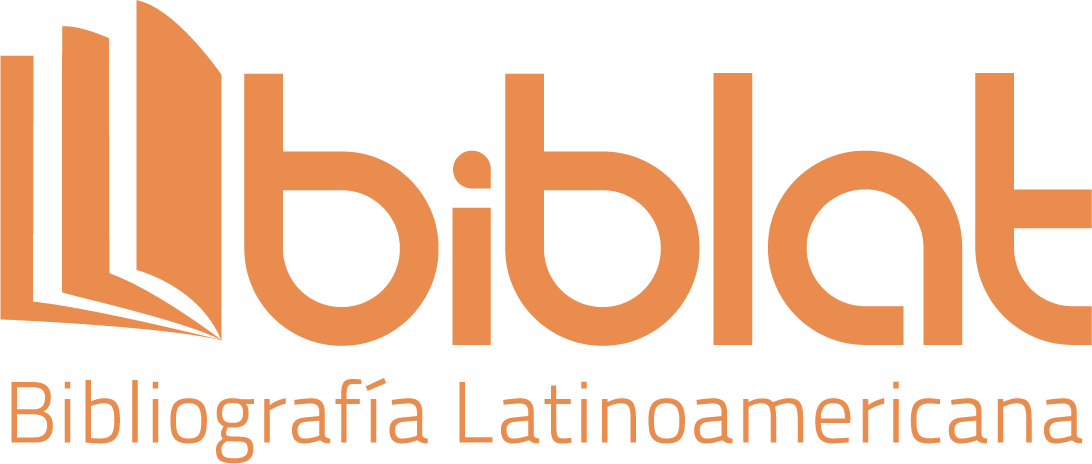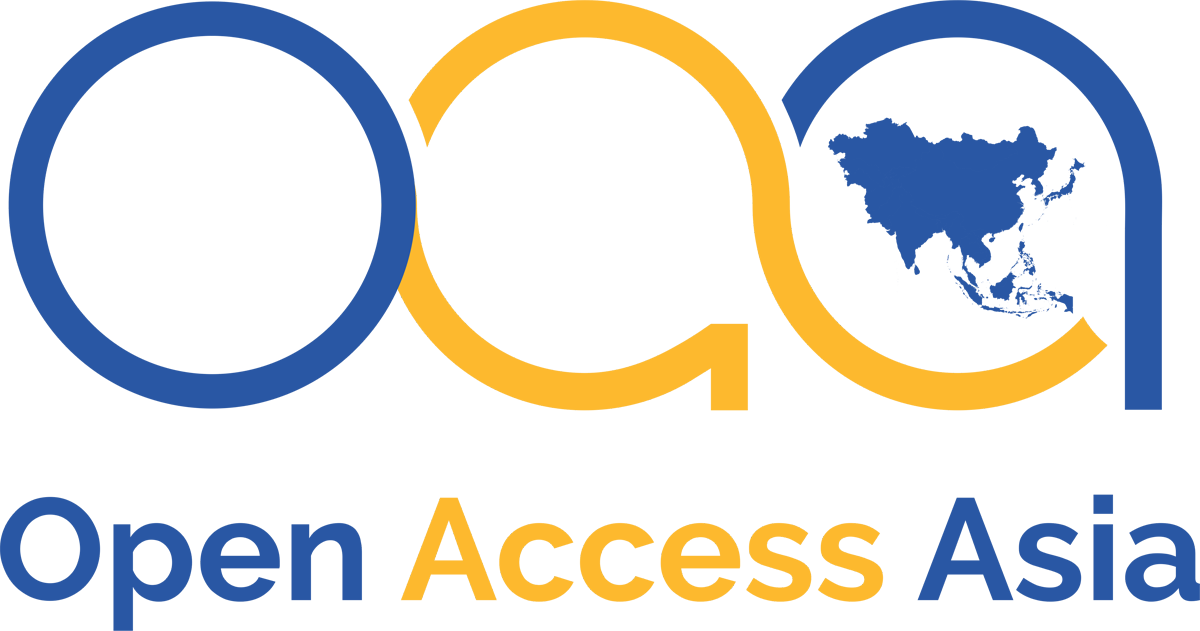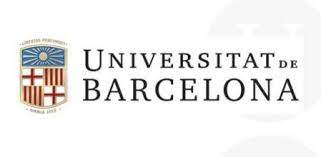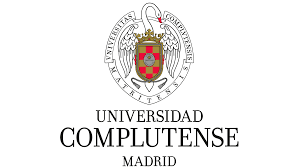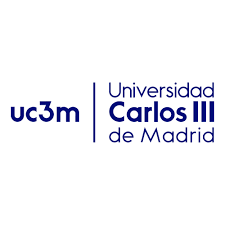The cyber-learning paradox: facts, myths and expectations about the impact of digital technologies on learning and cognition
DOI:
https://doi.org/10.51736/sa.v4i4.67Palabras clave:
Information and Communication technologies, digital technologies, cyber-learning, cognition, qualitative content analysisResumen
The impact of Information and Communication Technologies (ICTs) on learning remains one of the most controversial topics among scholars. There are experts who see them as the cornerstone of a revolution in education but others consider that ICTs have been overrated, as it was the case with radio and television in the twentieth century. This study attempted to analyze the potential and actual value of ICTs on learning and cognition, based on a qualitative content analysis that allowed to contrast the results of 150 research articles published between 2006 and 2021, with international reports and scholars’ contributions to the topic in discussion.
Descargas
Citas
Adell, J. & Castañeda, M. (2012). Tecnologías emergentes, ¿Pedagogías emergentes? In Tendencias emergentes en educación con TIC (pp.13-32). Espiral.
Bachrach, E. (2012). Ágilmente. Buenos Aires: Random House Mondadori.
Bardin, L. (1996). El análisis de contenido. Madrid: Akal.
Bates, A. W. (2015). Teaching in a digital age: guidelines for designing teaching and learning. Creative Commons. Retrieved from: https://www.tonybates.ca/teaching-in-a-digital-age/
Bauman, Z. (2000). Liquid modernity. Cambridge, UK: Polity Press.
Bergman, J. & Sams, A. (2012). Flip your Classroom: Reach Every Student in Every Class Every Day. Washington: International Society for Technology in Education.
Brynjolfsson, E. & McAfee, A. (2014). The Second Machine Age: Work, Progress, and Prosperity in a Time of Brilliant Technologies. New York, NY: W. W. Norton & Company.
Burke, P. (2012). A social History of Knowledge, volume II. From the Encyclopedie to Wikipedia. Cambridge: Polity.
Carr, N. (2011). The Shallows: What the Internet is Doing to Our Brains. New York, NY: W. W. Norton & Company.
Carr, N. (2015). The Glass Cage. How Our Computers Are Changing Us. New York: W. W. Norton & Company.
Castells, M. (2011). Comunicación inalámbrica, economía y sociedad. In Comunicación móvil y desarrollo económico y social en América Latina (pp. 331-374). Ariel.
Chemero, A. (2009). Radical embodied cognitive science. Cambridge, MA: MIT Press/Bradford.
Chi, E. H. (2009). Augmented social cognition: using social web technology to enhance the ability of groups to remember, think, and reason. In Proceedings of the 2009 ACM SIGMOD International Conference on Management of data (SIGMOD '09), Carsten Binnig and Benoit Dageville (Eds.). ACM, New York, NY, USA, 973-984. https://doi.org/10.1145/1559845.1559959
Christensen, C., Horn, M. & Johnson, C. (2008). Disrupting Class: How Disruptive Innovation Will Change the Way the World Learns. McGraw-Hill.
Clark, A. (2008). Supersizing the mind: Embodiment, action, and cognitive extension. Oxford and New York: Oxford University Press.
Cobo, C. & Moravec, J. (2011). Aprendizaje Invisible. Hacia una nueva ecología de la educación. Col·leccio Transmedia XXI. Laboratori de Mitjans Interactius / Publicacions i: Barcelona: Edicions de la Universitat de Barcelona.
Coll, C., Mauri, T. & Onrubia, J. (2008). La utilización de las tecnologías de la información y la comunicación en la educación: del diseño tecno-pedagógico a las prácticas de uso. In Psicología de la Educación Virtual (pp. 47-103). Ediciones Morata.
Crisafi, A. & Gallagher, S. (2010). Hegel and the extended mind. AI & Soc (2010) 25: 123. https://doi.org/10.1007/s00146-009-0239-9.
Dehaene, S. (2019). How we learn. Why brains learn better than any machine. New York: Viking, Penguin Random House.
Desmurget, M. (2019). La fabrique de crètin digital. Paris: Editions du Seuil.
Diamandis, P. & Kotler, S. (2020). The Future Is Faster Than You Think: How Converging Technologies Are Transforming Business, Industries and Our Lives. New York: Simon & Schuster.
Dillon, A. (1992). Reading from paper versus screens: A critical review of the empirical literature. Ergonomics, 35(10), 1297-1326.
Estany, A. & Sturm, T. (2014). Extended cognition: New philosophical perspectives. Special Issue of Philosophical Psychology, 27(1), 2014. http://www.tandfonline.com/toc/cphp20/27/1#.Uw7BgXkzd0o
Fullan, M. (2012). Stratosphere: Integrating Technology, Pedagogy and Change Knowledge. Canada: Pearson.
Fullan, M. & Langworthy, M. (2014). A Rich Seam: How New Pedagogies Find Deep Learning. Canada; Pearson.
Gardner, H. & Davis, K. (2013). The App generation. New Haven: Yale University press.
Gee, P. & Hayes, E. (2011). Language and Learning in the Digital Age. Routledge.
Gerver, R. (2010). Creating Tomorrow’s Schools Today. New York: Continuum.
Gonski Institute for Education. (2020). Growing Up Digital Australia: Phase 1 technical report. Gonski Institute for Education. University of South Wales (UNSW). https://www.teachermagazine.com/au_en/articles/the-impact-of-digital-technology-on-student-learning-and-wellbeing
Greenfield, S. (2014). Mind Change: How 21st Century Technology is leaving its mark on the brain. London, UK: Random House.
Hertz, M. (2019). Digital and Media Literacy in the Age of the Internet: Practical Classroom Applications. Maryland: Rowman and Littlefield.
Higgins, S., Xiao, Z. & Katsipataki, M. (2012). The impact of Digital Technology on Learning. Durham University.
Howe, N., & Strauss, W. (2000). Millennials rising: The next great generation. New York: Vintage Books.
Huertas, A., Vesga, G., Vergara, A. & Romero, M. (2015). Effect of a computational scaffolding in the development of secondary students’ metacognitive skills, International Journal Technology Enhanced Learning, 7(2), 143-159.
Hutchins, E. (1995). Cognition in the wild. Cambridge, MA: MIT Press.
Kerr, M. & Symons, S. (2006). Computerized presentation of text: Effects on children’s reading of informational material. Reading and Writing, 19, 1-19.
Khan, S. (2012). The One World School House. Education Reimagined. New York: Twelve.
Klein, N. (2020). Screen New Deal. https://naomiklein.org/the-screen-new-deal/
Kozulin, A. (2000). Instrumentos psicológicos: la educación desde una perspectiva sociocultural. Barcelona: Paidós.
Krippendorff, K. (1990). Metodología de análisis de contenido. Teoría y Práctica. Barcelona: Paidós.
Kumaravadivelu, B. (2012). Language Teacher Education for a Global Society: A Modular Model for Knowing, Analyzing, Recognizing, Doing, and Seeing. New York: Routledge.
Logan, R. K. (2007). The Extended Mind: The Emergence of Language, the Human Mind and Culture. Toronto: University of Toronto Press.
Logan, R. K. (2013). Mcluhan extended and the extended mind thesis (EMT). AVANT. The Journal Of The Philosophical-Interdisciplinary Vanguard, 4(2), 45-58. Available at http://openresearch.ocadu.ca/id/eprint/841/
López Noguero, F. (2009). El análisis de contenidos como método de investigación. Revista de Educación, 4(2002), 167-179. Retrieved from http://rabida.uhu.es/dspace/bitstream/handle/10272/1912/b15150434.pdf
Luckin, R., Bligh, B., Manches, A., Ainsworth, S., Crook, C. & Noss, R. (2012). The Proof, Promise and Potential of Digital Education. London: Nesta.
Luri, G. (2020). La escuela no es un parque de atracciones. Barcelona: Ariel.
Max-Neef M. De la esterilidad de la certeza a la fecundidad de la incertidumbre. Planteamientos en Educación (Bogotá). 1991; 2 (3):33-
Mitra, S. (2012). Beyond the Hole in the Wall: Discover the Power of Self-Organized Learning. TED books.
Menary, R. (ed.) (2010). The Extended Mind. Cambridge, MA: MIT Press/Bradford.
Monford, D. & Brown, S. (2013). What Do We Mean by Cyberlearning: Characterizing a Socially Constructed Definition with Experts and Practitioners? Journal of Science Education and Technology, 22(1), 90–102. doi: https://doi.org/10.1007/s10956-012-9378-8
Muñoz-Miralles, R. et al., (2014). Acceso y uso de nuevas tecnologías entre los jóvenes de educación secundaria, implicaciones en salud. Estudio JOITIC. Atención Primaria, 46(2), 77-88. http://www.sciencedirect.com/science/article/pii/S021265671300187X
National Science Foundation (2012). Cyberlearning: Transforming Education. Program Solicitation. http://www.nsf.gov/pubs/2011/nsf11587/nsf11587.pdf
Not, L. (2006). La enseñanza dialogante: hacia una educación en segunda persona. Barcelona: Herder.
Nordengen, K. (2016). Your Superstar Brain. London: Piatkus
OECD (2015). Students, Computers and Learning: Making the Connection, PISA, OECD Publishing. http://dx.doi.org/10.1787/9789264239555
Ophir, E., Nass, C. & Wagner, A. D. (20019). Cognitive Control in Media Multitaskers. Proceedings of the National Academy of Sciences. https://doi.org/10.1073/pnas.0903620106.
Paùl. F. (2019, December 6). Pruebas PISA: qué dice de la educación en América Latina los malos resultados obtenidos por los países de la región. BBC News. https://www.bbc.com/mundo/noticias-america-latina-50685470
Pea, R. (1993). Practices of distributed intelligence and designs for education. In Distributed cognitions: Psychological and educational considerations (pp. 47-87). Cambridge University Press.
Peronard, M. (2007). Lectura en papel y en pantalla de computador (Reading from paper and from computer screen). Revista Signos, 40(63), 179-195 http://dx.doi.org/10.4067/S0718-09342007000100009
Piñuel, J. L. (2002). Epistemología, metodología y técnicas del análisis de contenido. Estudios de Sociolingüística, 3(1), 1-42. https://www.ucm.es/data/cont/docs/268-2013-07-29-Pinuel_Raigada_AnalisisContenido_2002_EstudiosSociolinguisticaUVigo.pdf
Piolat, A., Roussey, J-Y. & Thuning, O. (1997). Effects of screen presentation on text reading and revising. International Journal of Human-Computer Studies, 47(4), 565-589.
Pletka, B. (2007). Educating the Net Generation: how to engage students in the 21st century. Santa Monica: Santa Monica Press.
Pozo, J. I. (2016). Aprender en tiempos revueltos. La nueva ciencia del aprendizaje. Madrid: Alianza Editorial.
Prensky, M. (2014). The World Needs a New Curriculum. The Global Future Education Foundation and Institute.
Prensky, M. (2010). Teaching Digital natives. Partnering for Real Learning. California: Corwin, Sage Company.
Reeves, L., Schmorrow, D. & Stanney, K. (2007). Augmented Cognition and Cognitive State Assessment Technology – Near-Term, Mid-Term, and Long-Term Research
Objectives. In Foundations of Augmented Cognition (pp. 220-228). Springer.
Resnick, M. (2002). Rethinking Learning in the Digital Age. In The global information technology Report: Readiness for the networked world (pp. 32-37). Oxford University press.
Rifkin, J. (2014). The Zero Marginal Cost Society: The internet of things, the collaborative commons, and the eclipse of capitalism. New York: Palgrave Macmillan,
Robinson. K. & Aronica, L. (2016). Creative Schools: The Grassroots Revolution That's Transforming Education. New York: Penguin.
Romero, M. & Vergara, A. (2014). Virtual Learning Environments and Metacognition: a bibliometric study in the Latin American context. Papeles, 6 (11), 72-86.
Salomon, G. (1996). Distributed Cognitions. Psychological and educational Considerations. New York: Cambridge University Press.
Salomon, G., Perkins, D. & Globerson, T. (1992). Partners in Cognition: Extending
Human Intelligence with intelligent Technologies. Educational Researcher, Vol.
, N. 3, pp. 2-9.
Schwab, K. (2016). The Fourth Industrial Revolution. Geneva: World Economic Forum.
Schunk, D. H. (2012). Learning theories: an educational perspective. Boston: Pearson.
Siemens, G. (2004). Conectivismo: Una teoría de aprendizaje para la era digital. En: https://es.scribd.com/doc/201419/Conectivismo-una-teoria-del-aprendizaje-para-la-era-digital.
Sternberg, R., Sternberg, K. & Mio, F. (2012). Cognitive Psychology. Belmont: Wadsworth: Cengage Learning.
Strenberg, R. & Preiss, D. (2005). Intelligence and Technology. The Impact of Tools on the Nature and Development of Human Abilities. New Jersey: Lawrence Erlbaum associates.
Tapscott, D. (2009). Grown up digital: How the Net generation is changing your world. New York: McGraw Hill.
Thagard, P. (2005). Mind: introduction to cognitive science. Boston: Massachusetts Institute of Technology.
Thagard, P. (2006). Hot thought: Mechanisms and Applications of Emotional Cognition. Boston: Massachusetts Institute of Technology.
Thomas L.G., Knezek D.G. (2008) Information, Communications, and Educational Technology Standards for Students, Teachers, and School Leaders. In: Voogt J.,
Knezek G. (eds) International Handbook of Information Technology in Primary and Secondary Education. Springer International Handbook of Information Technology in Primary and Secondary Education, vol 20. Springer, Boston, MA. https://doi.org/10.1007/978-0-387-73315-9_20
Thomas, D. & Seely Brown, J. (2011). New Culture of Learning: Cultivating the Imagination for a World of Constant Change. Lexington: CreateSpace
United Nations (2020). Policy Brief: Education during COVID 19 and beyond.
Vergara, A., & Perdomo, M. E. (2016). Fortalecimiento de la expresión oral y escrita en inglés a través de un andamiaje de escritura creativa colaborativa: un estudio de diseño desde la cognición distribuida. Forma y Función, 30 (1), 117-155.
Weisberg, R. & Reeves, L. (2013). Cognition: From memory to Creativity. New Jersey: Wiley.
Wellings, J. & Levine, M. (2009). The Digital Promise: Transforming Learning with Innovative Uses of Technology. Retrieved from: https://dmlcentral.net/wp-content/uploads/files/Apple.pdf
Zubiría, J. (2013). Como diseñar un currículo por competencias: fundamentos, lineamientos y estrategias. Bogotá: Magisterio.
Zubiría, J. (2006). Las competencias argumentativas. La visión de la educación. Bogotá: Magisterio.
Publicado
Cómo citar
Número
Sección
Licencia
Derechos de autor 2021

Esta obra está bajo una licencia internacional Creative Commons Reconocimiento-NoComercial-CompartirIgual 3.0.












